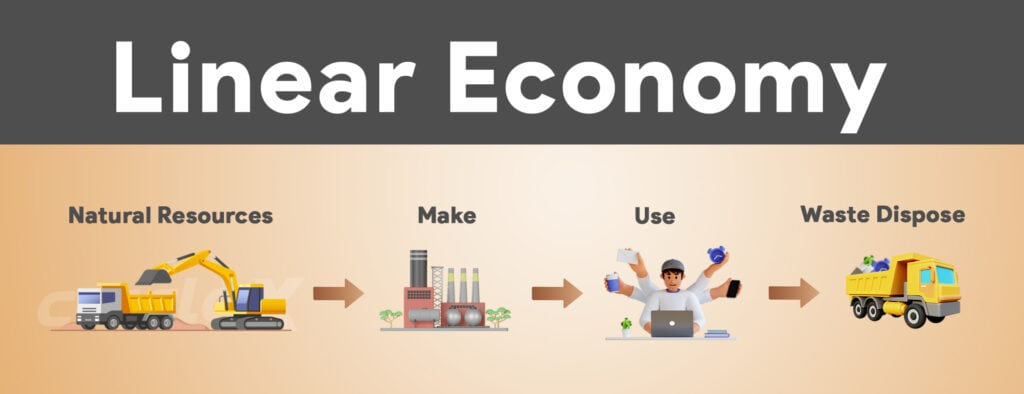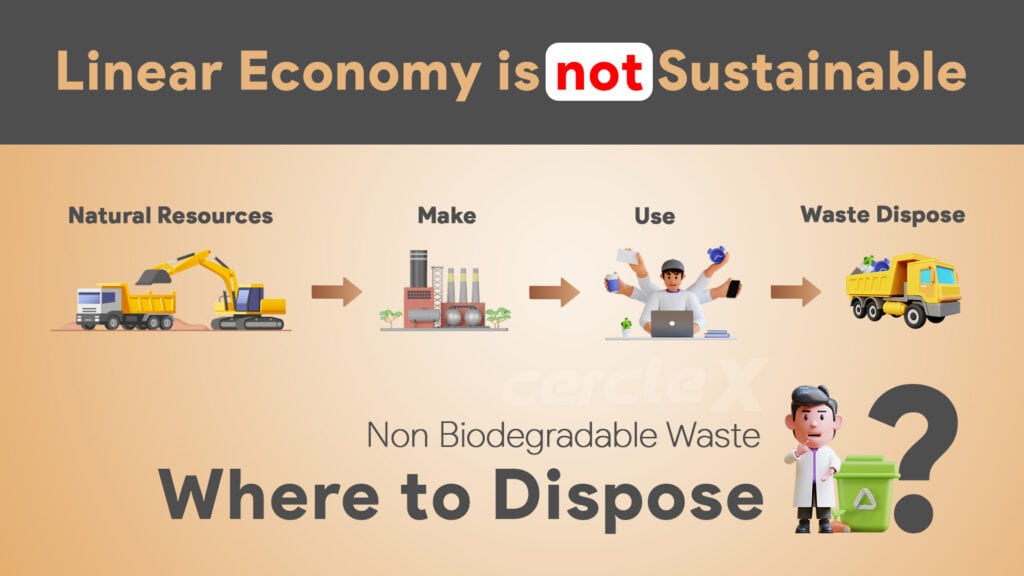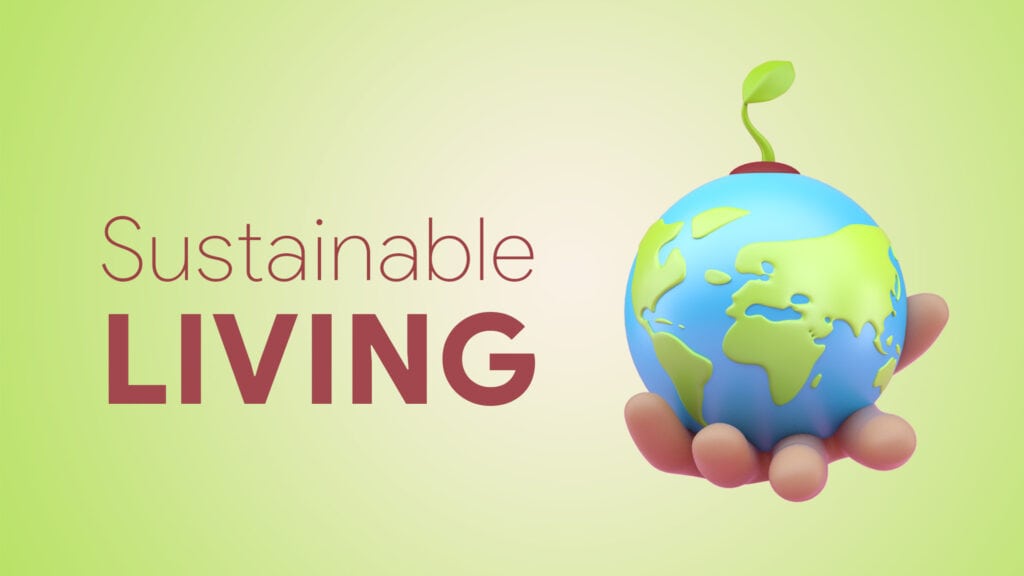Introduction
The world has experienced significant shifts, highlighting the pressing need for effective waste management. However, the true momentum of the socio-living cause is hampered by the improper channelization of waste management activities, including climatic changes, greenhouse gas emissions, raw material demand, economic slowdown, and more. Embracing the principles of the circular economy is crucial in addressing these challenges.
Waste is not the destiny to end all the products we consume. Instead, the theory behind waste has a never-ending loop in which the disposed waste can be reused, recycled, and re-utilized.
What is Linear Economy?

The traditional model has existed for a long time. In this model, raw materials are collected and developed into products that consumers use until discarding they as waste, with no concern for their ecological footprint, carbon emission, and consequences. Linear thinking is one of contemporary life’s most prevalent and damaging aspects.
We waste resources and energy in production. Our economy is based on a stock-and-flow approach, which means that products are constantly moving from the cradle to the grave: they begin life when they come out of the factory, go through intensive production processes and markets, then end their life when they reach the landfill. If the same trend continues at its current rate, we will need two planets by 2050 to produce goods in order to satisfy our growing consumption habits.
Why is the linear economy not suitable for Today’s trend?

The linear economy is deeply rooted in human consumption. This system emphasizes the products themselves, and the output result of such an equation is – mass production, consumption, and disposal.
The economy exploits workers and others who cannot extract their fair share of value in order to supplement the markets’ needs. As a result of the linear economy, raw materials and energy are exhausted, resulting in CO2 emissions.
Since 76% of raw materials are non-renewable, these products pose a serious environmental threat, especially because they are burned or detonated. The linear economy’s downfall is human exploitation, in addition to severe damage to the biosphere.
The linear economy is an unsustainable model. This approach makes products only to be used and then discarded. However, the linear economy will always continue if producers can finitely use resources.
What is a Circular Economy?

The circular economy is based on the idea of continually recycling and reusing materials rather than making them from scratch or using up finite resources once they are depleted. In this way, people and the Earth benefit since resources are reused rather than wasted. The circular economy has also been called the pre-shrunk economy or post-reused economy.
The linear economy follows steps that require only doing one thing at a time and then repeating it, e.g., take-make-recycle. There are three steps to the traditional linear economy: collection, transformation, and disposal. On the other hand, the circular system uses a more efficient route that allows for recycling and more efficient value creation to ensure long-lasting use of resources over time.
Why is the Circular Economy Important to create a sustainable living?

Through better design, the circular economy model aims to utilize resources more efficiently, recycle as much as possible, and reduce waste and pollution. In order to reduce emissions and ensure that resources are used efficiently and kept in circulation as long as possible, we focus on shifting how we extract, make, use and repurpose the materials in our products.
The innovative circular model involves a complete rethink approach to products and services, from planning to production and how we consume them.
Rather than producing new products based on finite resources, we shift from a linear model of extracting, consuming, and discarding materials as we go, to a model that uses all resources and repurposes them.
Take-Make-Use-Recycle
In the linear ecosystem, the waste generated is consumed and thrown away, which has created a massive amount of waste disposal in landfills. To an extent, all the resources incorporated in producing the product have been left over without any other processing techniques.
As an alternative method, the circular economy proved that the products manufactured, consumed & disposed of can be recycled using multiple recycling techniques (take-make-use-recycle).
According to the Take-Make-Use-Recycle circular system, the waste management ecosystem can redefine how we treat waste (post-consumer products).
The Circular Economy is about being more deliberate in managing waste by creating long-lasting value products. We are continually redefining how we make things and treat them; less waste equals more quality products that can be reused, giving a second life to materials and helping us achieve sustainability.
Linear vs. Circular Economy
In a linear economy, the product’s life ends after the customer uses it. The circular economy, on the other hand, uses the life of the final product as a fundamental resource throughout the production process. The model of the linear economy is also concentrated on products, but the business model of the circular economy concentrates on service.
The linear economy provides products and services to the market. On the other hand, the circular model supplies the market while it enables the product or service to be reused as an essential resource throughout the production process.
For example, Let’s look at a typical four-step process: making a box, using it, then sending it to a landfill. Instead, why not have the “end” be when it comes time to recycle? So instead of moving towards a linear economy, move more towards the circular economy by reducing waste and increasing recovery of resources.
Conclusion

With the goal of shifting to a circular economy, we can ensure clean water, clean air, and other essential goods are available to everyone. However, we cannot wait for others to take responsibility for their waste management plan. Our commitment—businesses and individuals alike—is to act Today to move away from a linear economy.
The circular economy is not just about taking care of the planet but also about caring for people, animals, and nature. There needs to be an equilibrium between basing our economy on a finite resource and distributing resources equally amongst all humans and non-human beings on this planet.
